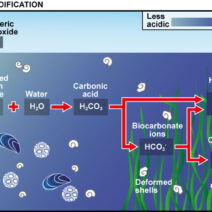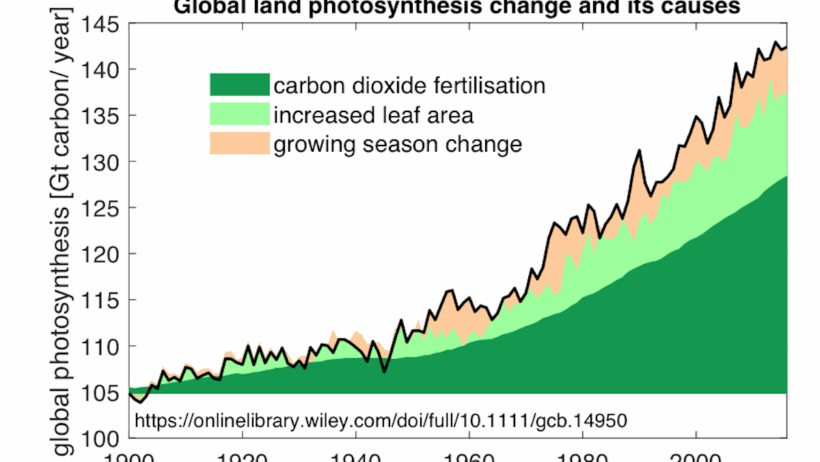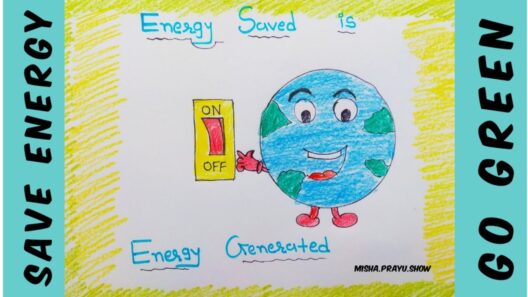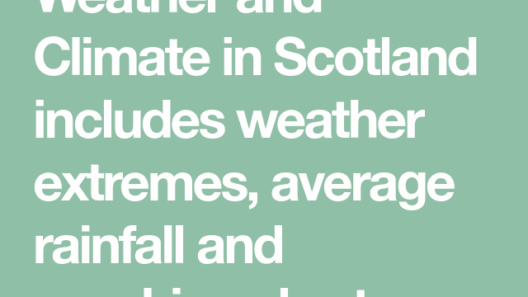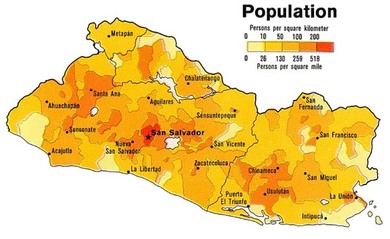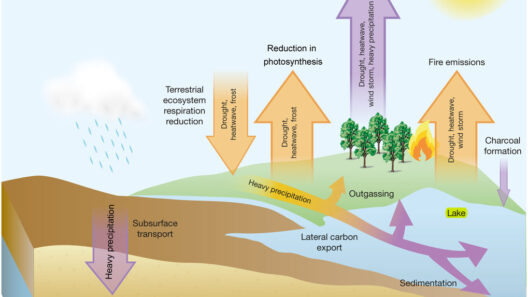In the face of escalating climate change, the role of plants in carbon capture has garnered significant attention. Many environmentalists and scientists tout the benefits of trees, shrubs, and other vegetation in mitigating the effects of greenhouse gases. The old adage “plant a tree” is more than just a moral imperative; it is a practical solution in our fight against climate change. Yet, the nuances of this relationship between plants and carbon are often overlooked, leading to misconceptions about the effectiveness and limitations of plant life in sequestering carbon dioxide.
At its core, photosynthesis is the process through which plants absorb carbon dioxide (CO2) from the atmosphere. Through a series of biochemical reactions, plants convert this greenhouse gas, along with sunlight and water, into glucose and oxygen. The glucose serves as a fundamental building block for growth and energy, while the oxygen is released back into the atmosphere, contributing to the air we breathe. It’s this intricate balance that forms the foundation of our terrestrial ecosystems.
However, the observation that plants can absorb carbon is multifaceted. While it is true that increased atmospheric CO2 levels can stimulate growth—a phenomenon often referred to as “CO2 fertilization”—the relationship is not linear nor universally beneficial. Factors such as soil quality, water availability, and nutrient levels heavily influence a plant’s ability to utilize the increased CO2. For instance, while some species of plants, particularly certain weeds and invasive species, may thrive in high CO2 environments, other plants struggle to adapt, potentially leading to a decline in biodiversity.
Additionally, the climate change graph depicting rising CO2 levels often sparks fascination as it underscores the alarming trajectory of greenhouse gas emissions. The steep incline in the graph correlates with industrialization and fossil fuel combustion, leading to calls for drastic reductions in carbon emissions. Yet, one must question: can we rely solely on plants to absorb the surplus carbon? The answer is complex. Plant life alone cannot serve as a panacea for climate change; it must be part of a broader strategy that includes reducing emissions at the source.
The effectiveness of carbon sequestration also varies by plant type and ecosystem structure. Forests, especially tropical rainforests, are among the most efficient ecosystems in this regard, capable of sequestering significant volumes of carbon over long periods. These mature forests not only capture carbon while living but also store it in their biomass—roots, trunk, and leaves—enhancing their role in the carbon cycle. Conversely, some grasslands and agricultural lands, while capable of storing carbon in the soil, may release substantial amounts of it through tillage and other farming practices. This illustrates the need for targeted conservation strategies that promote ecosystem diversity and resilience while maximizing carbon uptake.
A point of contention frequently arises regarding the longevity of carbon storage in plants. When trees die or are burned, the stored carbon is released back into the atmosphere, often negating any prior benefits provided during their lifespan. This cycle underlines the importance of considering both the growth and life cycle of plants. More sustainable practices, such as reforestation and agroforestry, serve not only to enhance biodiversity but also create sustained carbon sinks that will endure over time. Notably, these practices can restore degraded lands while offering socioeconomic benefits to local communities.
It is also critical to acknowledge the potential consequences of monoculture practices. Cultivating a single species over vast areas may initially improve carbon absorption; however, the long-term impacts on soil health and biodiversity can be detrimental. Healthy ecosystems with a variety of plant types adapt better to climatic swings and disease pressures, improving overall resilience and sustaining carbon storage capabilities. Thus, promoting polyculture systems aligns both ecological and economic interests.
Moreover, climate change threatens the very fabric of plant life, as shifting weather patterns, increased temperatures, and erratic precipitation affect plant viability and growth rates. In regions heavily impacted by climate change, predictions indicate that some species may face extinction, while others may proliferate beyond their native habitats. These disruptive changes risk destabilizing local ecosystems and diminish their capacity to capture carbon. Thus, it becomes essential to prioritize the preservation and restoration of a diverse array of plant species to ensure a robust response to rising CO2 levels.
In conclusion, the reciprocal relationship between plants and carbon absorption presents both opportunities and challenges in the context of climate change. While enhanced CO2 levels can indeed promote plant growth, this cannot be regarded as a silver bullet for our climate crisis. Comprehensive strategies that include carbon reduction, ecosystem restoration, and the promotion of biodiversity will yield more effective results. Rather than relying solely on the green foliage to siphon CO2 from the air, we must adopt a holistic approach—integrating scientific understanding with responsible stewardship practices to foster a sustainable future for our planet.
